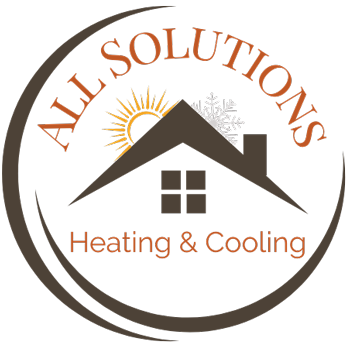
The Nest thermostat is one of the best-selling smart thermostats on the market today. And for good reason. It learns your temperature preferences and develops an energy-efficient schedule to match. And using geofencing with your phone, the Nest Learning Thermostat and Nest E realize when you’re at your residence or out and about and can adjust temps to help you save even more.
The Nest is compatible with a vast range of 24-volt heating and cooling systems, but it’s always a smart idea to check the Nest thermostat compatibility checker before purchasing one. Don’t forget to contact your energy supplier for valuable rebates, since you may be able to get a Nest for free or close to it.
Once you’ve confirmed it’s compatible, you can either wire it without help or contact a HVAC professional like All Solutions Heating & Cooling. If you’re wiring it without help, you’ll spot a terminal for the C-wire, or common wire. This wire is solely used for powering your thermostat. If your residence or HVAC system is older, you might not have one of these wires. In the majority of cases, Nest says this isn’t a setback as the thermostat can get ample power from other heating and cooling wires.
Sometimes, your heating and cooling system might need that C-wire. And here’s why.
Why Your Nest Keeps Losing Power and Other Malfunctions
The Google Nest Thermostat is an improvement from outdated programmable thermostats that use a combination of wiring and AA batteries for power. It uses a rechargeable lithium-ion battery and wiring to link to Wi-Fi, power its digital display and run your heating and cooling system.
8 Common Nest Thermostat Problems
If it can’t draw ample electricity, Nest says you could run into some of these problems:
- Bad battery life.
- Thermostat motion sensing is disabled.
- Your thermostat every now and then disconnects from Wi-Fi.
- Your system abruptly turns on or off, or won’t stop running.
- Your system is creating strange noises, including chattering, stuttering, clicking or thumping.
- Heating or cooling is short cycling, or repeatedly turning on and off in a short period of time.
- There is a delay notification on your Nest thermostat’s screen, like “heating is delayed for 2:30 minutes.”
- The system fan is constantly on, won’t turn on or turns off and on rapidly in a short period of time.
You may think something is wrong with your heating and cooling system, but if you just installed the Nest, we recommend you start with your thermostat first. This is especially true if the weather is mild, and you haven’t been running your heat or air conditioning frequently.
Our Pros Can Resolve Nest Thermostat Problems
If you’ve gone through Nest thermostat troubleshooting by yourself but can’t fix the dilemma, a smart thermostat professional such as one from All Solutions Heating & Cooling can assist you. We can pinpoint the issue and put in a C-wire, if needed.
Smart thermostats including the Nest are created to make your life easier, through automatic energy-efficient programming and the option to keep an eye on settings while you’re out. It’s a frustrating experience when yours won’t operate like it should, but our heating and cooling pros at All Solutions Heating & Cooling can resolve the problem fast.
If you’re running into unexplained heating and cooling behavior with your new Nest, reach out to us at 971-245-2459 to request your appointment now.



